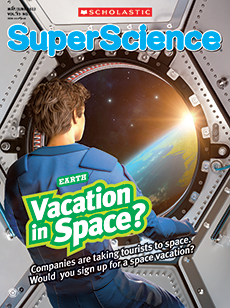On September 16, 2021, a spacecraft called the Crew Dragon Resilience blasted off from the Kennedy Space Center, in Florida. Unlike all space missions before it, not one of the crew members on board was an astronaut! Resilience took a 72-hour trip orbiting Earth before splashing down in the Atlantic Ocean.
The mission, known as Inspiration4, was operated by the company SpaceX. It’s one of several recent missions that sent civilians, people who aren’t trained astronauts, to space. The mission’s commander, business owner Jared Isaacman, spent millions of dollars to fund the flight. The crew also included a physician assistant, a geologist, and a software engineer.
A rocket launched on September 16, 2021. It took off from the Kennedy Space Center, in Florida. The rocket carried a spacecraft called the Crew Dragon Resilience. This space mission was different from others. None of the crew members on board were astronauts! The craft took a 72-hour trip orbiting Earth. Then it splashed down in the Atlantic Ocean.
The mission was called Inspiration4. The company SpaceX ran it. It was just one of several recent missions that sent civilians to space. A civilian is someone without astronaut training. Business owner Jared Isaacman led the mission. He spent millions of dollars to fund the flight. Three others were part of the crew. One was a physician assistant. Another was a geologist. The third member was a software engineer.
